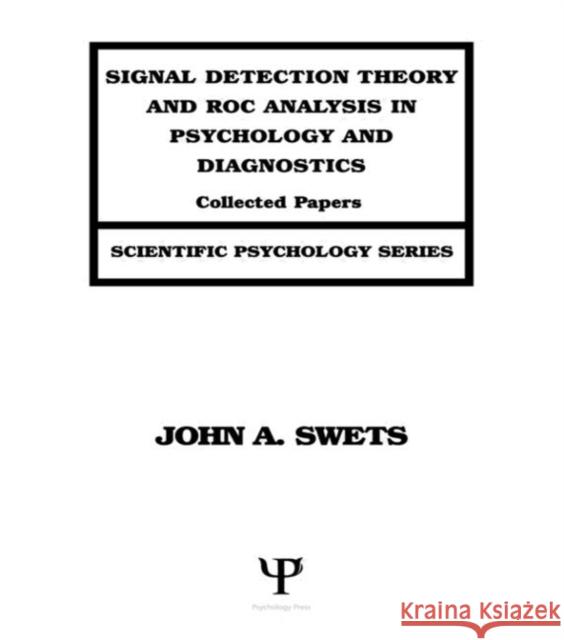Signal Detection Theory and ROC Analysis in Psychology and Diagnostics : Collected Papers » książka
Signal Detection Theory and ROC Analysis in Psychology and Diagnostics : Collected Papers
ISBN-13: 9780805818345 / Angielski / Twarda / 1996 / 328 str.
Signal Detection Theory and ROC Analysis in Psychology and Diagnostics : Collected Papers
ISBN-13: 9780805818345 / Angielski / Twarda / 1996 / 328 str.
(netto: 669,47 VAT: 5%)
Najniższa cena z 30 dni: 654,86
ok. 22 dni roboczych
Dostawa w 2026 r.
Darmowa dostawa!
Signal detection theory - as developed in electrical engineering and based on statistical decision theory - was first applied to human sensory discrimination 40 years ago. The theoretical intent was to provide a valid model of the discrimination process; the methodological intent was to provide reliable measures of discrimination acuity in specific sensory tasks. An analytic method of detection theory, called the relative operating characteristic (ROC), can isolate the effect of the placement of the decision criterion, which may be variable and idiosyncratic, so that a pure measure of intrinsic discrimincation acuity is obtained. For the past 20 years, ROC analysis has also been used to measure the discrimination acuity or inherent accuracy of a broad range of practical diagnostic systems. It was widely adopted by the methodologists in the field of information retrieval, is increasingly used in weather forecasting, and is the generally preferred method in clinical medicine, primarily in radiology. This book attends to both themes, ROC analysis in the psychology laboratory and in practical diagnostic settings, and to their essential unity.











